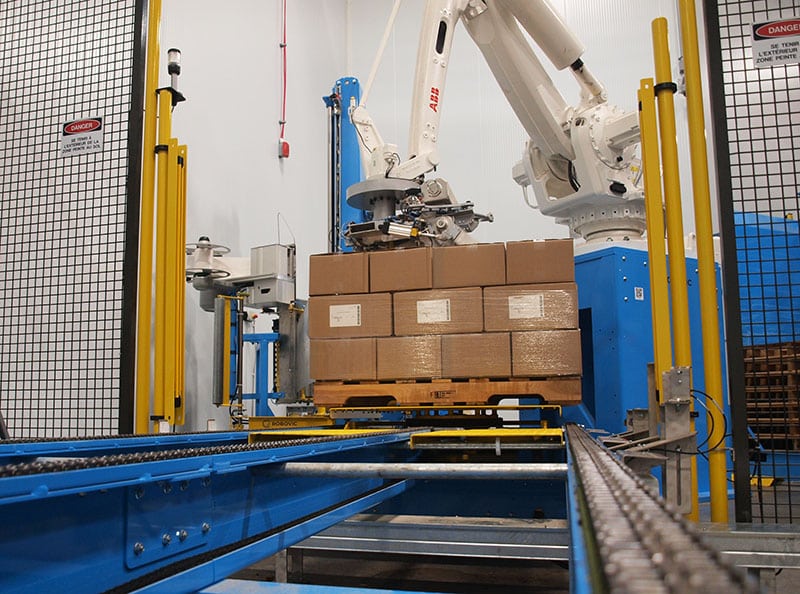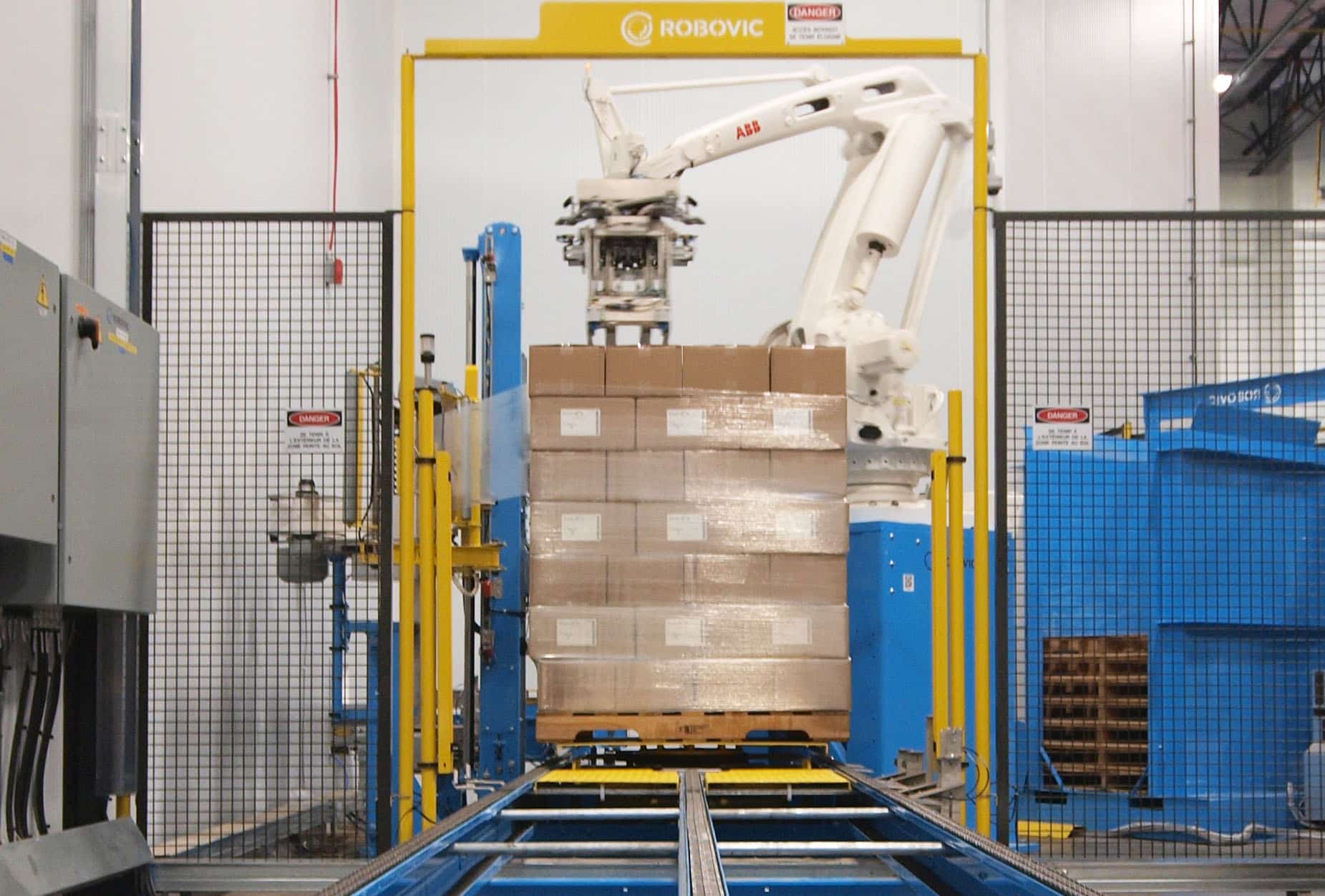WHY CHOOSE ROBOTIC AUTOMATIC PALLETIZER MACHINES OVER CONVENTIONAL PALLETIZERS ?
On the market for several years now, conventional palletizing has become well established in order to meet the growing needs of companies. Robotic palletizing arrived later and brought with it many advantages compared to conventional systems. Reliability and flexibility are some of the assets these systems have to offer.
These days when a company decides to automate there are two options possible: conventional palletizers or robotic automatic palletizer machines. In this article, we will analyze the difference between the two systems and explain why automatic palletizers are becoming the most popular, well-informed choice.

AUTOMATIC PALLETIZER MACHINE’S SPEED
The great advantage to conventional palletizing lies in its high production capacity. These systems can reach speeds of up to 150/200 cases per minute. Conventional palletizing is suitable for high-speed applications, which is why it continues to be used specifically in the food and bottling industries.
It is preferable to use robotic automatic palletizer machines on a multi-line system at lower speeds, especially when handling bags, milk crates or any other objects that are difficult to palletize. A multi-line system allows simultaneous palletizing of different products on several pallets using a single robot which increases flexibility.
An automatic palletizer can provide up to 60 bags per minute, however, it is still possible to increase this rate by integrating a second robot to the cell which optimizes speed.
MAINTENANCE
Conventional palletizer machines perform many operations therefore require more care than a robotic automatic palletizer. Many of the mechanical components needed to operate a conventional palletizer needs significant downtime for maintenance which can impact production.
Downtime for robotic automatic palletizers is considerably less frequent than traditional. ABB robots are able to execute up to 400,000 hours which is equivalent to more than 45 years of labour! Robots are the most reliable component in a shop.
HINDRANCE
The surface required to implement a conventional palletizer requires a lot of space, both on the ground and in height. The equipment is imposing as it is in place to execute various functions.
On the other hand, it is possible to install a robotic automatic palletizer in tight spaces, while adapting to products and workplace codes. Robotic palletizers work within confined spaces and in environments filled with dust and particles, making them perfect for bag palletizing applications.

VERSATILITY
Traditional automatic palletizer machines have been designed to palletize only one type of product at a time, making it a weakness compared to the robotic version. The two big advantages of the robotic palletizer lie in its flexibility and expandability.
Flexibility : Robotic automatic palletizers adjust to production changes more efficiently. They can handle many types of pallets and products, such as bags, crates, bottles, sheets, etc. It is also possible to produce mixed palletizing, that is to palletize different formats (weight, size, shapes) on their respective pallets.
Scalability : Once the robotic automatic palletizer machines are installed, it is easy to evolve with new needs. The system can adapt to various environmental changes, without causing excessive loss of time or costly investment. It is also easier to increase speed with robotic systems.
Robotic automatic palletizers are designed to adapt to existing lines and space in order to increase production rates or adapt to new products. They can also be reconfigured for new applications.
PRICE
The price of automatic palletizer machines whether conventional or robotic are relatively similar.
For slower rates or for mixed palletizing, a robotic automatic palletizer is more convenient since it requires less manipulation and fewer mechanical elements which in the long run reduces costs significantly. In addition, the lifespan of a robotic palletizer is greater than that of traditional automation systems.
CONCLUSION
In the end, robotic automatic palletizers offer more flexible and reliable solutions than conventional systems. These solutions make it possible to evolve with the growing needs of a company. Low maintenance costs and simple palletizing pattern changing add to the benefits of a quicker return on financial investment. Their high reliability and low maintenance demand give them a clear advantage over conventional systems.
Read more
ROBOVIC will be present at ADM/PACKEX’s show in Montréal
Do not hesitate to meet us at booth #1610 to discover our end of production line solutions. The show will taking place on November 9th and 10th,2022 at the Palais des congrès in Montréal.
Integrated pallet wrapper : 3 essential elements to consider for packaging products
Selecting the right industrial wrapper when integrating a palletizer is essential, discover the advantages of integrated wrapping…
Palletizing gripper : why control product deposit rather than letting it drop ?
Discover the advantages of depositing the products on an angle with the palletizing gripper developed by ROBOVIC…
